#Exhibition Polyhedra
Explore tagged Tumblr posts
Text

grahamshellswell
Stockholm Metro: World’s Longest Art Exhibit
Tekniska Högskolan Station
Kungliga Tekniska Högskolan, the Royal Institute of Technology, was founded in 1827 and got its metro station in 1973. The station’s decor, created by Lennart Mörk, celebrates scientific advances, technology, the laws of nature, etc. The station is full of quotations from famous events in science history and representation of scientific and mathematical formulas/equations etc. The most famous piece is probably the five regular polyhedra which represents Plato’s five elements.

vintergatanphotography
#grahamshellswell#photographer#stockholm#sweden#metro lines#subway#art exhibit#tekniska hogskolan station#royal institute of technology#lennart mork#artist#art#plato#vintergatanphotography
15 notes
·
View notes
Photo
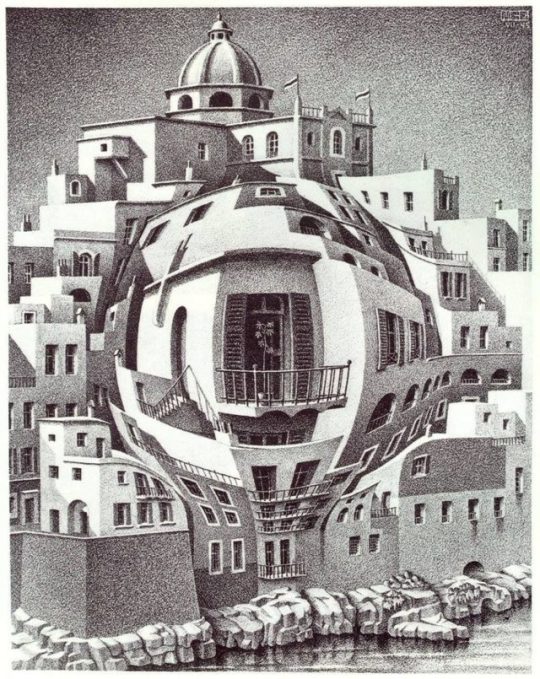
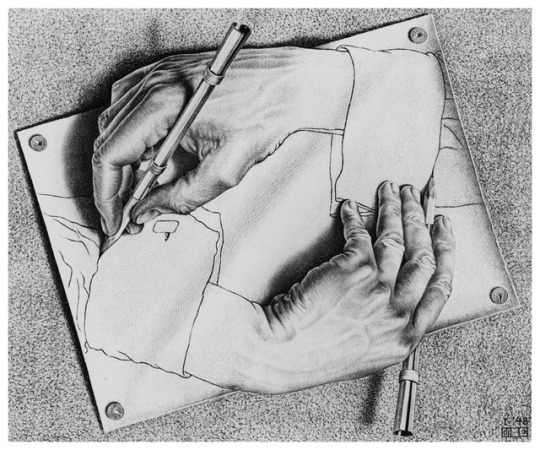
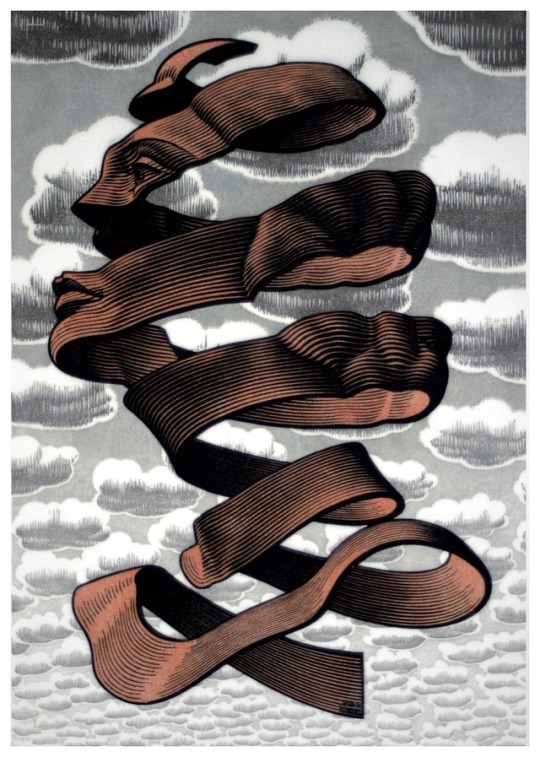
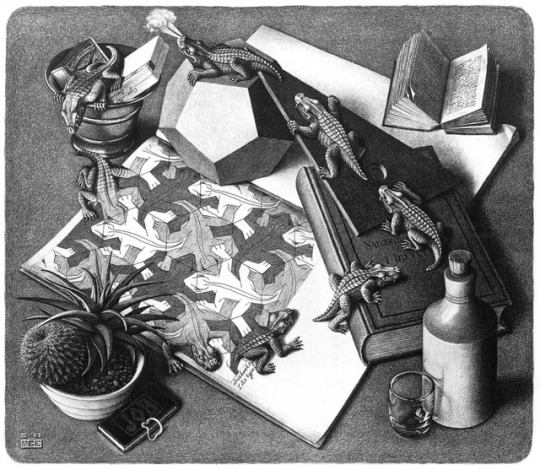
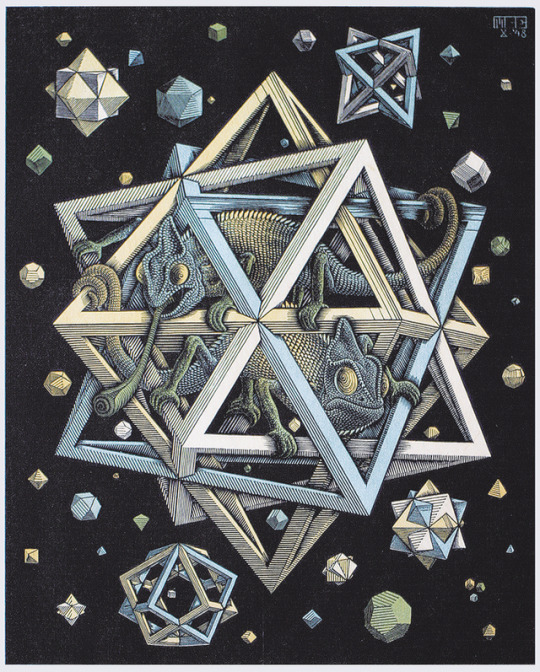
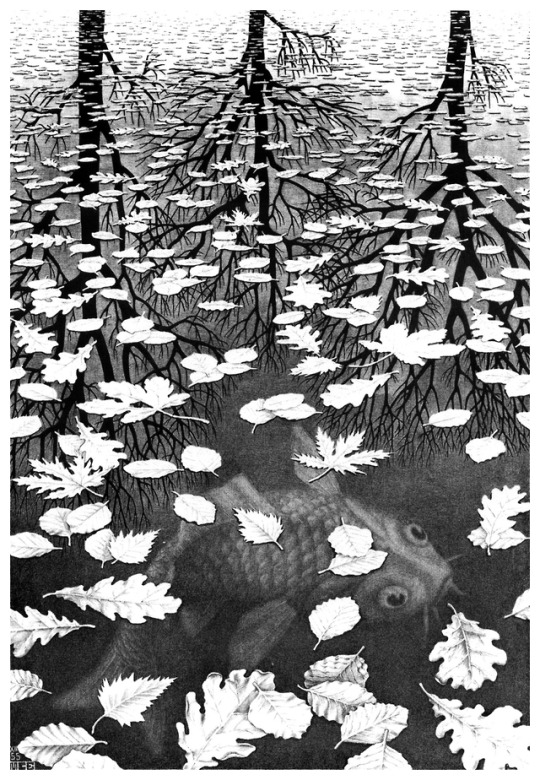
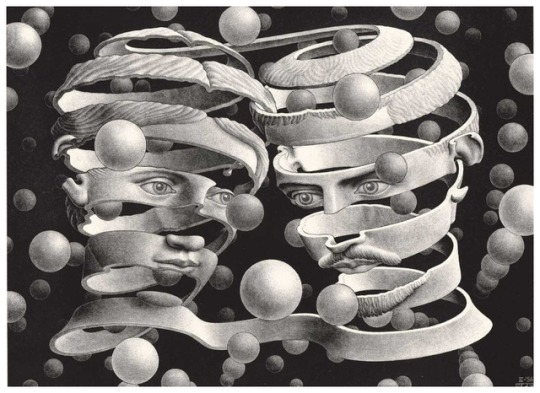
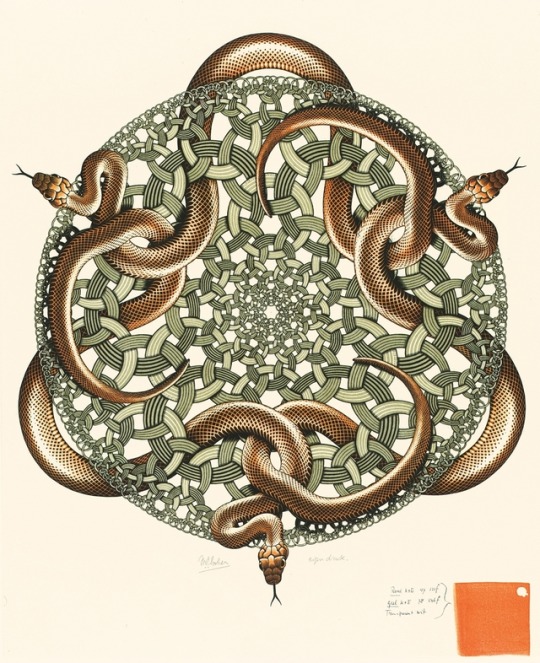

Graphic Work by M.C. Escher
Maurits Cornelis Escher (1898 - 1972) was a Dutch graphic artist who made mathematically-inspired woodcuts, lithographs, and mezzotints. Despite the wide popular interest, Escher was for long somewhat neglected in the art world, even in his native Netherlands. He was 70 before a retrospective exhibition was held. In the twenty-first century, he became more widely appreciated, with exhibitions across the world. His work features mathematical objects and operations including impossible objects, explorations of infinity, reflection, symmetry, perspective, truncated and stellated polyhedra, hyperbolic geometry, and tessellations.
Art not only for connoisseurs. Posted by Margaret from tu recepcja via
2K notes
·
View notes
Text
Celebrating Escher’s birthday!
Maurits Cornelis Escher (17 June 1898 – 27 March 1972) was a Dutch graphic artist who made mathematically-inspired woodcuts, lithographs, and mezzotints. He was 70 before a retrospective exhibition was held. His work features mathematical objects and operations including impossible objects, explorations of infinity, reflection, symmetry, perspective, truncated and stellated polyhedra, hyperbolic geometry, and tessellations.
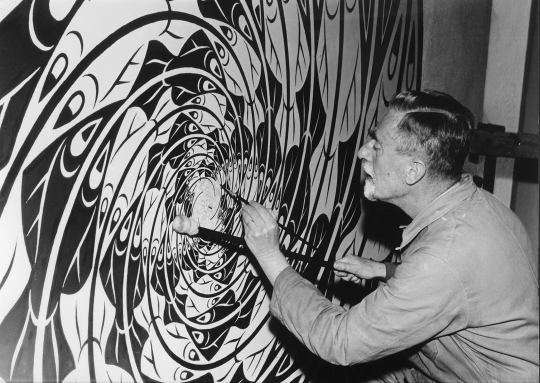
Although Escher believed he had no mathematical ability, he interacted with the mathematicians George Pólya, Roger Penrose, Harold Coxeter and crystallographer Friedrich Haag, and conducted his own research into tessellation.
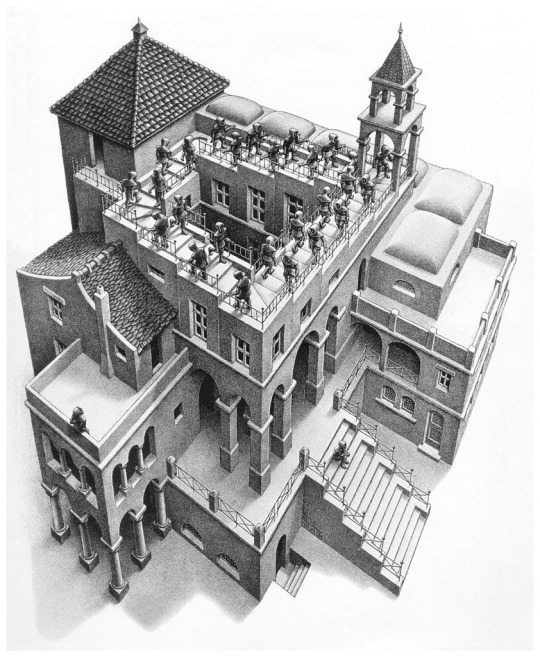
325 notes
·
View notes
Photo
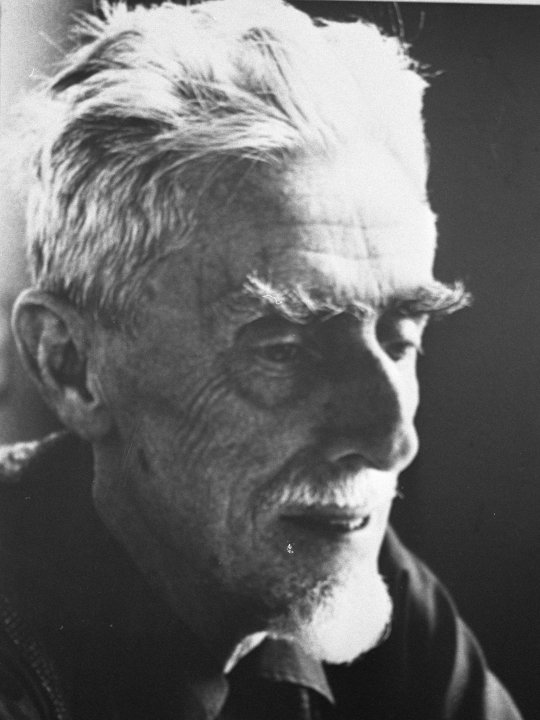
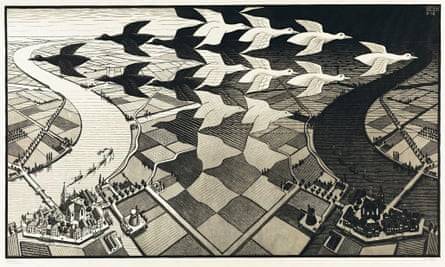
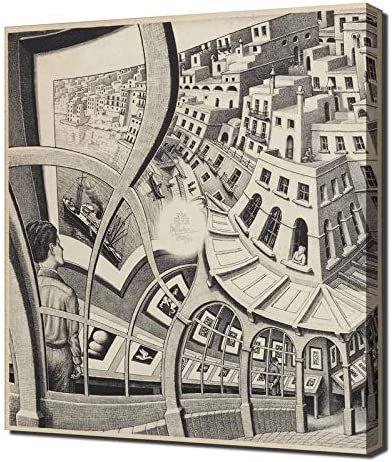
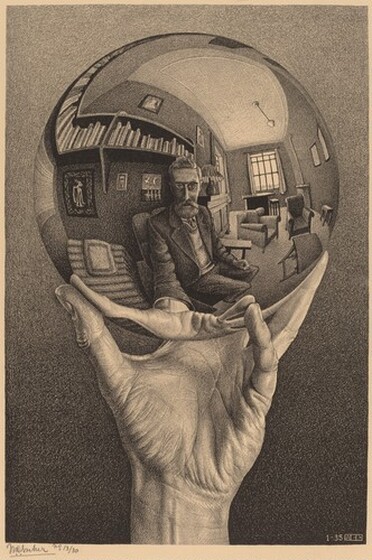
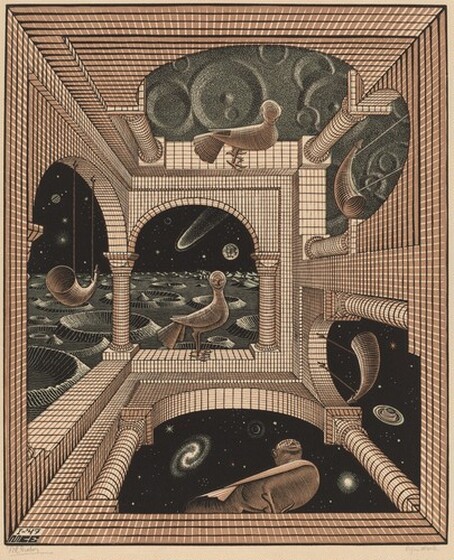
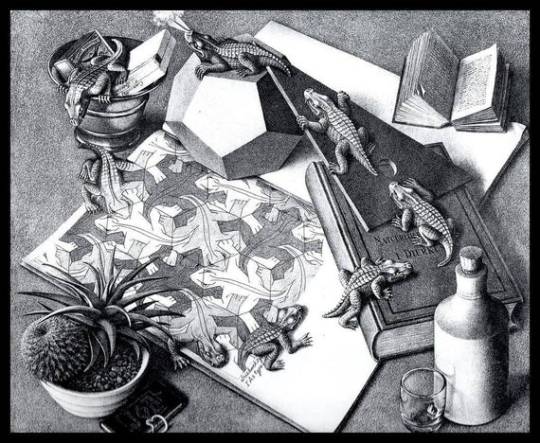
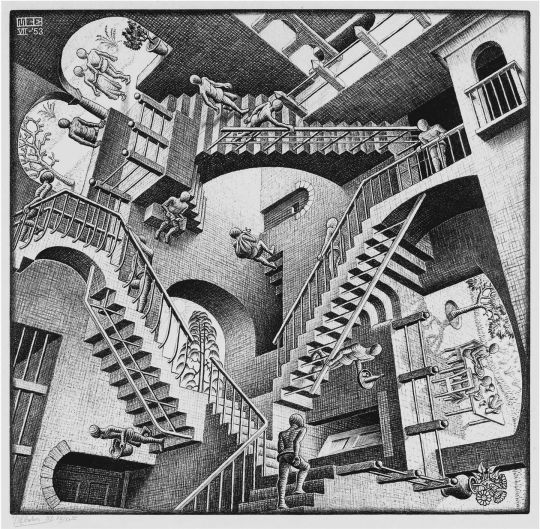
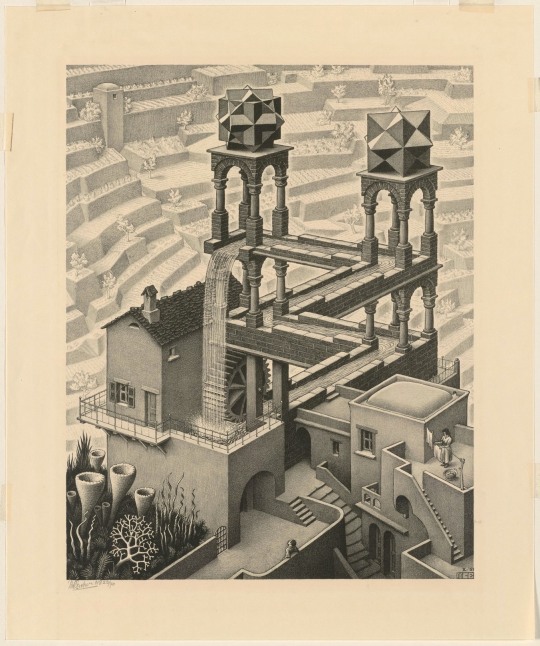
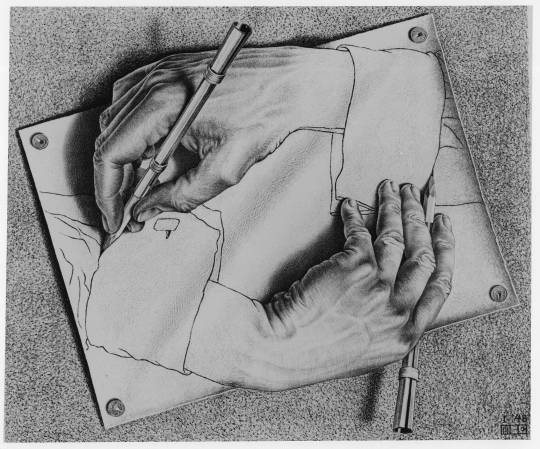
Arrivals & Departures 17 June 1898 – 27 March 1972 Celebrate Maurits Cornelis Escher Day!
Maurits Cornelis Escher (Dutch pronunciation: [ˈmʌurɪt͡s kɔrˈneːlɪs ˈɛʃər]; 17 June 1898 – 27 March 1972) was a Dutch graphic artist who made mathematically inspired woodcuts, lithographs, and mezzotints. Despite wide popular interest, Escher was for long somewhat neglected in the art world, even in his native Netherlands. He was 70 before a retrospective exhibition was held. In the twenty-first century, he became more widely appreciated, with exhibitions across the world.
His work features mathematical objects and operations including impossible objects, explorations of infinity, reflection, symmetry, perspective, truncated and stellated polyhedra, hyperbolic geometry, and tessellations. Although Escher believed he had no mathematical ability, he interacted with the mathematicians George Pólya, Roger Penrose, Harold Coxeter and crystallographer Friedrich Haag, and conducted his own research into tessellation.
Early in his career, he drew inspiration from nature, making studies of insects, landscapes, and plants such as lichens, all of which he used as details in his artworks. He traveled in Italy and Spain, sketching buildings, townscapes, architecture and the tilings of the Alhambra and the Mezquita of Cordoba, and became steadily more interested in their mathematical structure.
Escher's art became well known among scientists and mathematicians, and in popular culture, especially after it was featured by Martin Gardner in his April 1966 Mathematical Games column in Scientific American. Apart from being used in a variety of technical papers, his work has appeared on the covers of many books and albums. He was one of the major inspirations of Douglas Hofstadter's Pulitzer Prize-winning 1979 book Gödel, Escher, Bach.
2 notes
·
View notes
Text
Zeitz Museum – timeslive Photo Iwan Baan
During this travel adventure I’ve wandered through museums and galleries in different European countries, but South Africa’s Zeitz Museum was always near the top of my list. I missed it in the past but made a point of popping in last week. The first and third floors are being renovated and closed to the public until August. I still saw plenty of incredible art and discovered interesting artists!
MOCAA at Dusk – Heatherwick Studio Photo Iwan Baan
History
Completed in late 2017, Zeitz Museum of Contemporary Art Africa (MOCAA) is a masterful creation by British architect Thomas Heatherwick. He converted a “century-old grain silo and historical landmark at Cape Town’s V&A Waterfront into a world-class art gallery”! The privately-funded Zeitz is not only the largest art museum in Africa but also the largest exhibition in the world “showcasing the art of Africa and its diaspora”.
Thomas Heatherwick Architect – The Architects’ Journal
_____________
“British architect Thomas Heatherwick was inspired to create an art institution on a continent as big as the whole of Europe and North America combined.”
_____________
Jochen Zeitz African Contemporary Art Collector – Segera David Crookes The B Team
The museum’s goal was bringing together works by African artists and “invigorating interest in African contemporary art”. MOCAA does the opposite of what the old grain silo did in the same space.
Koyo Kouoh MOCAA Director and Chief Curator – Zeitz MOCAA
“At the same time the V&A Waterfront was wondering how to develop an iconic, century-old grain silo African contemporary art collector and German businessman, Jochen Zeitz, was looking for a museum to house his collection.”
Zeitz Museum Atrium from Tunnel – timeslive Photo Iwan Baan
Purpose and Design
The Zeitz Museum is dedicated to “researching, collecting, and exhibiting art from the African continent and beyond”. The exhibition space covers 6,000 square meters (almost 65,000 sq. ft.) on nine floors, with 100 gallery spaces.
Zeitz Museum Atrium Vault – timeslive Photo Iwan Baan
_____________
During the old days, “grain was exported outwards from the silo. The MOCAA creates a place where African art can return and from where it will not leak away.”
_____________
Zeitz Museum Interstitial Space – timeslive Photo Iwan Baan
The interior is carved out in the shape of an enlarged grain of corn. The result is a “series of curved concrete lines with light pouring in through the cylindrical silo structures!” The brilliant design gives visitors a spectacular “cross-section view of the inner workings of the old industrial structure”.
Zeitz Museum Atrium – timeslive.co.za Photo Iwan Baan
Curator
Director and Chief Curator, Koyo Kouoh, has 20 years’ experience as an international curator. A native of Dakar Senegal, Kouoh developed art programs and served as curator of contemporary African art in London and New York.
MOCAA Cubist Stairway
Artists
I’m in awe of the many extraordinarily talented, award-winning African artists featured at the MOCAA. It’s slightly intimidating, and I’m still educating myself about African artists like Frances Goodman, Kendell Geers, William Kentridge, and Nicholas Hlobo. Works of a few favorites are detailed and highlighted in this post:
El Anatsui – Ghana
Sory Sanlé – Burkina Faso
Sue Williamson – UK and South Africa
Pamela Phatsimo Sunstrum – Botswana
Mary Sibande – South Africa
Joana Choumali – Abidjan Côte d’Ivoire
Neo Matloga – South Africa
Sue Williamson – Wikipedia
Sory Sanlé – YouTube
Joana Choumali – joanachoumali.com
Mary Sibande – Glamour South Africa
Pamela Phatsimo Sunstrum – Africa’s Out!
El Anatsui – el-anatsui.com
Neo Matloga
El Anatsui
El Anatsui was born in Ghana and currently lives in Nigeria. His career spams forty years as both sculptor and Professor of Sculpture at the University of Nigeria.
El Anatsui When I Last Wrote to You About Africa
He’s best known for his repurposing of alcohol bottle caps into large-scale hanging installations and creating art weaves from discarded materials of production, trade, and consumption created during the colonial expansion in Africa.
El Anatsui Aluminum and Copper Wire Brooklyn Museum – artefuse.com
_____________
El Anatsui’s work “breaks from the traditional cast of sculptural practice invoking a multi-layered, sensory re-imagining of our material world”. He’s “accomplished one of the very few genuine breakthroughs in contemporary art anywhere in the world today.”
_____________
El Anatsui TSIATSIA – Searching for Connections ruthball.weebly.com
His stunning sculptures appear in the British Museum London, Centre Pompidou Paris, de Young San Francisco, Metropolitan Museum of Art New York, Guggenheim Abu Dhabi, Osaka Foundation of Culture Osaka, Tate Modern London, and Museum of Modern Art New York.
He’s had many solo exhibitions and received awards and recognition all over the world. Some of El Anatsui’s best-known works include:
Fresh and Fading Memories – Venice
When I Last Wrote to You about Africa – Cape Town
Broken Bridge – Paris
TSIATSIA – London
Kindred Viewpoints – Marrakech
Sory Sanlé Burkina Faso
Sory Sanlé
Sory Sanlé is a Burkinabe photographer and owner of the Volta Photo Studio. He lives and works in Bobo-Dioulasso Burkina Faso.
Sory Sanlé Burkina Faso
Sanlé’s career began in 1960, the year Burkina Faso won independence from France. He’s known for documenting the “fast evolution of his own city, Bobo-Dioulasso,” and capturing the “frontal collision between modern life and centuries-old traditions from the culturally rich and rural region”.
Sory Sanlé Burkina Faso
He portrays Bobo-Dioulasso’s people with “wit, energy, and sheer passion”. His background paintings, be they a modern city, beach walk board, airplane, or antique column are outstanding.
Sory Sanlé Burkina Faso
_____________
“Sory Sanlé’s subjects illustrate the remoteness and melancholy of African cities landlocked deep in the heart of the continent and the natural fusion operating between tradition and modernity.”
_____________
Sue Williamson A Few South Africans – Winnie Mandela
Sue Williamson
Sue Williamson was born in England but her family immigrated to South Africa when she was seven. She studied art in New York and in 1983, was awarded a Diploma in Fine Art from the Michaelis School of Fine Art, University of Cape Town.
Both a journalist and printmaker, Williamson works “predominantly in installation, photographic images, and video”. Her work addresses social issues “pertaining to civil activism, citizenry, senses of community, or aspects of contemporary history as told from the perspectives of individuals”.
Sue Williamson A Few South Africans – Miriam Makeba
_____________
“I think early work in newspapers is quite formative in my art because of that sort of interest in people’s exact words and precise narratives.” Sue Williamson
_____________
Sue Williamson A Few South Africans – Lilian Ngoyi
In the 1980s, Williamson created a series of “photo-etchings and screen print portraits foregrounding the importance of women in South Africa’s political struggle”. In her work, Williamson emphasizes the “importance of revisiting history as a way of understanding a nation’s present”.
Sue Williamson A Few South Africans – Virginia Mngoma
“A Few South Africans (1983-85) is a visual narrative attempt to fill the representational absence of people and events during Apartheid, giving a tangible and iconic visibility to female leaders and women of courage who were active in the fight against Apartheid – Elizabeth Paul, Maggie Magaba, Winnie Mandela, Lilian Ngoyi, Annie Silinga, Nokukhanya Luthuli, Helen Joseph, Albertina Sisulu, Amina Cachalia, Caroline Motsoaledi, Virginia Mngoma, Charlotte Maxeke, and others.”
Sue Williamson A Few South Africans – Amina Cachalia
_____________
“We’re in the process of coming to terms with the past. I think that, before we can move on, we have to reach a point where we can find our way to a solution and say: OK, we’ve confronted our past as intensively as possible.” Sue Williamson
_____________
Sue Williamson A Few South Africans – Annie Silinga
Some of Williamson’s most powerful, best-known works include:
For Thirty Years Next to His Heart (1990)
Her Better Lives Series (2003)
There’s Something I Must Tell You (2013)
Sue Williamson A Few South Africans – Caroline Motsoaledi,
An internationally recognized artist, Williamson has active art exhibitions in South Africa and around the world. She served as Chairperson of the Visual Arts Group, founding member of the arts organization Public Eye, and founding editor of Artthrob, a website on contemporary art in South Africa.
All My Seven Faces Pamela Phatsimo Sunstrum – omenkaonline.com
Pamela Phatsimo Sunstrum
Born in Botswana, Pamela Phatsimo Sunstrum grew up in Canada, Sudan, Sri Lanka, Malawi, and South Africa. She attended the Baltimore Maryland Institute College of Art and University of North Carolina in Chapel Hill. Her solo exhibitions have appeared in the US, South Africa, and the UK.
Pamela Phatsimo Sunstrum
Sunstrum’s work “features black and brown people posed against somewhat contrived, hand painted landscape backdrops”. Sunstrum’s landscapes “expand on themes of timelessness” where she “reconstructs sites both real and imagined to reveal the small scale of individuals within the vast universe”. Her beautiful, complex work is fascinating!
Pamela Phatsimo Sunstrum
Pamela Pharsimo Sunstrum – pamelaphatsimosunstrum.com
Pamela Phatsimo Sunstrum
Some of Pamela Phatsimo Sunstrum’s exhibitions include:
Polyhedra
All My Seven Faces
There are Mechanisms in Place
Omphalos
Before Being Asked by the Machine
Space Station All-Stars
Let Me Show You My Ship – Pamela Phatsimo Sunstrum
_____________
Themes in Sunstrum’s exhibitions explore “mythologies and theories of the creation of the universe” and the “co-reliant relationship between science and mythology”.
_____________
Mary Sibande – In the Midst of Chaos There is Opportunity
Mary Sibande
Mary Sibande – sculptor, photographer, and visual artist – is based in Johannesburg. She was educated in Fine Arts at Witwatersrand Technikon and has a Bachelor of Technology from the University of Johannesburg. “Fascinated with fashion and fabric” Sibande focuses is on “questions of the body and how to reclaim the black female body in post-colonial and post-apartheid South Africa”.
youtube
Sibande “draws inspiration from her experiences growing up in South Africa”. Her focus on “the maid is cited as homage to her family, of which four generations of women served as domestic workers”.
Mary Sibande Long Live the Dead Queen – ruxandrabp.wordpress.com
Sibande works through an “alter-ego, Sophie, a sculptural figure who traverses the uncanny valleys of liminal space”. Sophie is a symbolic figure speaking for “femininity, blackness, labour, post-coloniality, and communities on the margin as a whole”.
____________
“My work is not complaining about Apartheid, or an invitation to feel sorry for me because I’m black and my mother was a maid. It’s about celebrating what we are as women in South Africa today. For us to celebrate, we need to go back to see what we are celebrating. To celebrate, I needed to bring this maid.” Mary Sibande
_____________
Some of Sibande’s works include:
In the Midst of Chaos There is Opportunity
Long Live the Dead Queen
A Reversed Retrogress, Scene 2
The Mechanism
Mary Sibande Purple Shall Govern – MAC VAL Musée d’Art Contemporai
Sibande has received awards and appeared at expositions and festivals throughout Africa and worldwide. She has been a research fellow at numerous institutions, including the Smithsonian Institute, University of Michigan, and Ampersand Foundation. She’s involved with ActionAid South Africa and the Young Urban Women Programme raising funds and introducing art to girls in low-income communities.
Sibande’s spectacular exhibit at the Zeitz – In the Midst of Chaos There is Opportunity – depicts “women in combat, modelled on the artist’s mother, a domestic worker in South Africa, riding toy horses and seen amongst blood-red canines and vultures”.
Joana Choumali Alba’hian
Joana Choumali
Joana Choumali is based in Abidjan Côte d’Ivoire. Before her career as a freelance photographer, she studied graphic arts in Casablanca and worked as an art director.
Joana Choumali Alba’hian
Her creations exhibit soft, subtle figures that “highlight the equal humanity of men and women”. Her style includes conceptual portraiture, mixed media, and documentary. Choumali “focuses on Africa, her assumptions about the diversity of cultures around her, and her expanding conceptions of the world”.
Joana Choumali Alba’hian
Joana Choumali Alba’hian
Joana Choumali Alba’hian
Joana Choumali Alba’hian
_____________
“Joana Choumali uses photography to explore issues of identity and the diversity of African cultures.”
_____________
Joana Choumali Resilients
Joana Choumali Resilients
Some of Joana Choumali’s best-known exhibitions include:
Alba’hian
Hââbré, The Last Generation
Resilients
Joana Choumali Hââbré, The Last Generation
Resilients documents young, professional African women who “struggle with connecting to their family’s traditional past”. To emphasize the link between past and present, the women were photographed wearing traditional clothing worn by their grandmothers or an older female relative. Hââbré, The Last Generation is about facial scarification across the Ivory Coast, a practice that’s dying out.
Neo Matloga – Tyburn Gallery
Neo Matloga
Born in Limpopo in 1993, Neo Matloga studied at the University of Johannesburg. His work is exhibited locally and internationally and on display in the City of Ekurhuleni, the South African Embassy in Washington DC, and in private collections. Matloga lives in Amsterdam, where he’s a “participating artist at a post-academic institution De Ateliers”.
“Influenced by one of his father’s art quotes, “art should heal psychologically” and the energy projected by South African youth, Matloga rejects limiting himself to specific artistic mediums. His paintings, drawings, and collages are versatile. They explore the Post-Mandela era and “mythic power of Sophiatown, an area outside Johannesburg”.
Neo Matloga
Matloga creates a nostalgic feeling by “collaging objects and materials that reference domestic households”. He produces “fragments of incredible happiness from his upbringing, conversations, and poetic moments he remembers from growing up in a Post-Mandela era.” The “main themes in his work centre around his passion for black people feeling that there is an ability to belong and exist”.
Neo Matloga
_____________
“As the legacy of apartheid persists, with no doubt there were and still are social issues such as crime and moral degradation, but none of this determined the concept of life in its entirety.”
_____________
Neo Matloga
Neo Matloga’s black and white paintings reflect the “domestic, daily life in black households in South Africa” – with a kick. Titles appear in his mother tongue, Sepedi, a language spoken in Mpumalanga, Gauteng and Limpopo provinces. His “cast of characters play out every-day dramas, experiencing the struggles and consolations of desire and intimacy”.
Neo Matloga Hugh Masekela – robynsassenmyview.com
“The people in Matloga’s paintings are ‘moral agents’ who are affected by the socio-economic and political conditions that shape life outside as well as inside the four walls of their homes.” His characters have “outsized eyes, mouths, and ears, skin tone with abrupt changes, hairstyles and hats sit atop the wrong heads, and accessories are often comically misplaced”.
Neo Matloga
_____________
Matloga’s characters are described as “hybrids”. He forms their faces by “collaging together photographic images of friends, family, and famous South African figures from politics and the arts”.
_____________
Neo Matloga
Matloga uses the process of “cutting, reconfiguring, and collaging facial anatomy” for political purposes and to “identify with the racist gaze”. I had to do some research on Matloga’s work to better understand it.
youtube
Neo Matloga solo shows and presentations include:
2019 Neo to Love – Fries Museum, Leeuwarden, Netherlands
2018 Good Morning Midnight curated by Tom Morton – De Ateliers, Amsterdam
2017 Molatelo – Christopher Moller Gallery, SCOPE Art Fair, New York
2016 Moo re Tswang Gona – Christopher Moller Gallery, FNB Joburg Art Fair
Zeitz Museum of Contemporary African Art Cape Town During this travel adventure I've wandered through museums and galleries in different European countries, but South Africa's Zeitz Museum was always near the top of my list.
#Abdulhay Jassat#ActionAid South Africa#African Contemporary Art#Architect Thomas Heatherwick#Arthur Goldreich#Artthrob#Brenton Maart’s curated South African Pavilion Imaginary Fact#Cape Town&039;s V&A Waterfront#Exhibition Polyhedra#Frances Goodman#Grain Silo V&A Waterfront#Harold Wolpe#Hââbré The Last Generation#Joana Choumali#Jochen Zeitz African Contemporary Art Collector and German Businessman#Kendell Geers#MAC/VAL Museum#Marshall Square Prison#Mary Sibande#Michaelis School of Fine Art#MOCAA Director and Chief Curator Koyo Kouoh#Mosie Moolla#Neo Matloga#Nicholas Hlobo#Pamela Phatsimo Sunstrum#Public Eye#Purple Must Govern Mary Sibande#Sue Williamson#The Order of Luthuli in Bronze to Amina Cachalia#University of Cape Town
0 notes
Text
How Cement Mixers Work
In addition to the mixing energy applied to the fresh concrete (i.e. shearing during mixing), the shear history after mixing is also important. This applies especially to binder rich concretes like the different types of high performance concrete (HPC). With this in mind, the shear rate is analyzed inside a drum of a concrete tank truck. The objective is to better understand the effect of transport of fresh concrete, from the ready mix plant to the building site. The analysis reveals the effect of different drum charge volume and drum rotational speed. Also, the effect of yield stress and plastic viscosity is investigated. The work shows that the shear rate decreases in an exponential manner with increasing drum charge volume. It is also shown that for a given drum speed, the shear rate decreases both with increasing plastic viscosity and yield stress.
Since civilizations first started to build, the human race has sought materials that bind stones into solid formed mass. After the discovery of Portland cement in 1824 (year of patent), concrete has become the most commonly used structural material in modern civilizations. The quality of the concrete structure is of course dependent on the quality of each constituent used in the concrete mix. However, this is not the only controlling factor. The quality also depends very much on the rheological properties of the fresh concrete during placement into the formwork [1]. That is, the concrete must be able to properly flow into all corners of the mold or formwork to fill it completely, with or without external consolidation depending on workability class. Tragic events may sometimes be traced back to concrete of unsuitable consistency resulting in, for example, coldjoint and honeycombing. Therefore, one of the primary criteria for a good concrete structure is that the fresh concrete exhibits satisfactory rheological properties during casting [1]. The use of simulation of flow to analyze such behavior is something that has been increasing in popularity for the last decade [2], [3], [4], [5], [6], [7], [8], [9]. In 2014, a RILEM state-of-the art report (TC 222-SCF) was made specifically on this subject [10]. Here, such method is used to analyze the shear rate inside a concrete truck mixer for a wide range of cases. Previously in [11], such simulation was reported for the case of yield stress 50 Pa and plastic viscosity 50 Pa ⋅s, in which the aim was to verify a special truck mixer simulator.
In addition to the energy applied during mixing (i.e. shearing during mixing) [12], [13], [14], the shear history after mixing is also important [15], [16], [17]. This applies especially for binder rich concretes like the (rich) high performance concrete (HPC). This is due to the influence that the binder exerts on the concrete as a whole in terms of thixotropic- and structural breakdown behavior (these two terms are well explained in [18]). The rheological state of the binder depends heavily on the shear rate and especially on its history [15], [16], [17]. That is, in a highly agitated system (high shear rate), the cement particles will disperse, making the overall fresh concrete more flowable. While in a slowly agitated system, the cement particles will coagulate and thus thicken the overall fresh concrete.
The rheological properties of the fresh concrete depends on the proportions of each constituent as well as on their quality. However, as is apparent from the above paragraph, conditions like the shear rate during transport can play a major role on final workability. That is, a concrete batch with seemingly target rheological behavior at the ready mix plant can become unsuitable at the building site due to thixotropic thickening, caused by insufficient agitation during transport (i.e. low shear rate). The decrease in the slump during transport in truck mixer can be up to 90 mm, which corresponds to a deviation of one and a half consistency class [11]. Such could lead to the refusal of acceptance, or in the case of acceptance, make successful casting in awkward sections or through congested reinforcement difficult, resulting for example in honeycombing [1], [11].
In this work, the shear rate is analyzed inside the drum of a concrete fuel tank truck. This is done to better understand the potential effect of transport, from the ready mix plant to the building site, in terms of the concrete final rheological state. From Section 1.2, a higher shear rate will imply increased dispersion of the cement particles and thus more flowable concrete during the casting phase. Likewise, a lower shear rate will imply insufficient agitation, increased thixotropic rebuild and thus stiffer concrete during casting.
Because the shear rate within the drum is highly non-uniform and time dependent, meaning , a two step integration is most necessary to generate quantifiable values for analysis and comparison, which is shown later. The final outcome is given by and is simply referred to as “shear rate”. Here, this shear rate is analyzed as a function of drum rotational speed f = 0.03, 0.07, 0.11, 015, 019 and 0.23 rps (revolutions per second) and drum charge volume V = 2.6 m3, 5.4 m3 and 8.2 m3. In addition to this, the effect of yield stress τ0 = 0, 150 and 300 Pa and plastic viscosity μ = 25, 75 and 125 Pa ⋅s, is analyzed.
The simulation software used in this work is the OpenFOAM. It is licensed under the GNU General Public License (GNU GPL) and available at http://openfoam.org, without charge or annual fee of any kind. The benefits of using a GNU GPL licensed code rather than a closed commercial code, is that the user has always a full access to the source code, without any restriction, either to understand, correct, modify or enhance the software. Here, this is a highly desirable feature since a custom made solver is used for the current analysis. The software OpenFOAM is written in C++. As such, an object-oriented programming approach is used in the creation of data types (fields) that closely mimics those of mathematical field theory [19]. For the code parallelization and communication between processors, the domain decomposition method is used with the Message Passing Interface, or MPI [20]. In OpenFOAM, the collocated mesh system (in Cartesian coordinates) is applied in conjunction with the finite volume method (FVM).
The mesh in Fig. 1 is generated with a native OpenFOAM mesh utility called blockMesh. To investigate the mesh dependency of the numerical result, two different mesh densities (or mesh resolutions) are used, namely 58,888 and 372,568 cells, which are shown in the left and right illustrations of Fig. 1, respectively. For the former case, 88% of the cells are hexahedra, while it is 99% for the latter case. In either case, the remaining cells consist of prisms, tetrahedra and polyhedra. In the end of the mesh generation, its quality is checked with another native OpenFOAM utility, named checkMesh.
The internal dimensions shown to the left and right in Fig. 1 are identical and were directly measured at the local concrete premixing plant: the internals consists of two helix shaped blades, in which the blade thickness is roughly 8 mm, while the height is about 430 mm. The space between two adjacent blades is 620 mm on the average. As shown in Fig. 1, all these numbers vary as a function of the location within the drum. These number also change as a function of time, depending on drum usage. That is, the concrete wears and tears the internals of the drum with time.
Decrease of availability of fossil fuels and environment issues, push research towards the development of high efficiency power trains for vehicles that transport people, goods and mobile operating machines, like the concrete 5cbm mixer truck considered in this paper. Conventional concrete 3cbm mixer truck use diesel engine to move the truck and a hydraulic system which keep spinning the concrete drum. A hybrid powertrain based on battery-powered electrical drives can replace the conventional hydraulic system assuring an efficiency improvement. Furthermore, thanks to the reversibility of the electrical drives, it is possible to recover kinetic energy during the braking phases of the truck. Aim of this paper is to study and develop a hybrid powertrain for the concrete mixer drum. The study is based on a full energetic model of the vehicle developed for sizing the components and designing the control strategies. A model of the conventional hydraulic 8cbm mixer truck has also been proposed in order to evaluate the benefit introduced by the proposed hybrid system. Simulation models have been validated comparing experimental data collected on a conventional mixer truck in different operating conditions.
Most construction equipment is easy to understand. Cranes move things up and down. Dump trucks load up, move out and unload. Bulldozers push and graders grade. The one exception to this is the humble cement mixer, beloved by children, hated by in-a-hurry drivers, and misunderstood by most people outside the cab of the 30,000-pound (13,608-kilogram) behemoths.
While concrete has been around in one form or another since before the Romans built the Appian Way, the transit mixer is a child of the 20th century. But recent invention or not, the mixer is here to stay.
The misunderstanding begins with the name. What people refer to as a cement mixer is known in the construction industry as a concrete mixer and comes in a large number of types, sizes and configurations to handle the many tasks set before it each day. That need to fill so many roles means the machine is dynamic, changing shape and form as the needs of the people using concrete change as well.
In this article we'll examine some of the major types of mixers, from the traditional drum-shaped ready-mix transit mixer to the less-common but growing in popularity volumetric mixer, essentially a concrete plant on wheels. How cement mixers work and why they work the way they do is a fascinating combination of old and new technology. You'll never see a cement mixer the same way again.
But before we begin, let's clarify the difference between cement and concrete. In baking terms, the difference between concrete and cement is the difference between flour and a loaf of bread. Concrete is a generic term for a mix of aggregate -- usually stone or gravel, water and cement. Modern cement is a complex blend of finely ground minerals, and goes by the generic name of "portland." Concrete is made by combining the three ingredients in a mixer, whether that mixer is stationary or driving down the road, and the water is absorbed by the cement, which then binds the aggregate together, creating concrete.
0 notes
Photo
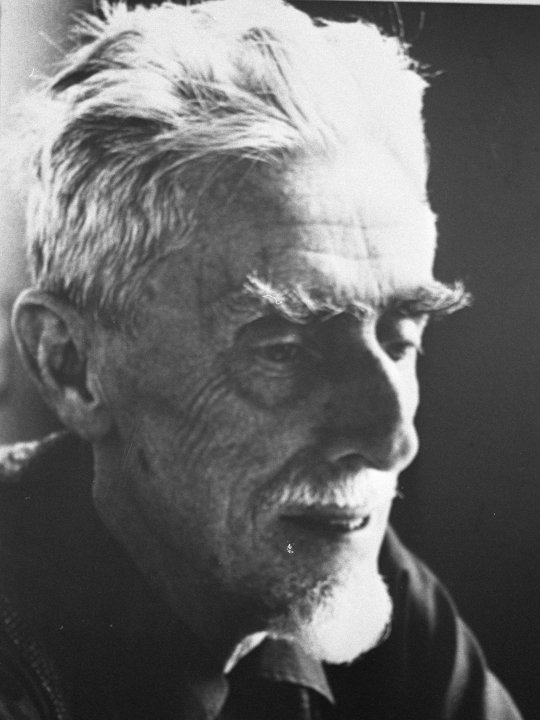
Today we remember the passing of Maurits Cornelis(MC) Escher who Died: March 27, 1972 in Laren, Netherlands
Maurits Cornelis Escher (17 June 1898 – 27 March 1972) was a Dutch graphic artist who made mathematically inspired woodcuts, lithographs, and mezzotints. Despite wide popular interest, Escher was for long somewhat neglected in the art world, even in his native Netherlands. He was 70 before a retrospective exhibition was held. In the late twentieth century, he became more widely appreciated, and in the twenty-first century he has been celebrated in exhibitions across the world.
His work features mathematical objects and operations including impossible objects, explorations of infinity, reflection, symmetry, perspective, truncated and stellated polyhedra, hyperbolic geometry, and tessellations. Although Escher believed he had no mathematical ability, he interacted with the mathematicians George Pólya, Roger Penrose, Harold Coxeter and crystallographer Friedrich Haag, and conducted his own research into tessellation.
Early in his career, he drew inspiration from nature, making studies of insects, landscapes, and plants such as lichens, all of which he used as details in his artworks. He traveled in Italy and Spain, sketching buildings, townscapes, architecture and the tilings of the Alhambra and the Mezquita of Cordoba, and became steadily more interested in their mathematical structure.
Escher's art became well known among scientists and mathematicians, and in popular culture, especially after it was featured by Martin Gardner in his April 1966 Mathematical Games column in Scientific American. Apart from being used in a variety of technical papers, his work has appeared on the covers of many books and albums. He was one of the major inspirations of Douglas Hofstadter's Pulitzer Prize-winning 1979 book Gödel, Escher, Bach.
Maurits Cornelis Escher was born on 17 June 1898 in Leeuwarden, Friesland, the Netherlands, in a house that forms part of the Princessehof Ceramics Museum today. He was the youngest son of the civil engineer George Arnold Escher and his second wife, Sara Gleichman. In 1903, the family moved to Arnhem, where he attended primary and secondary school until 1918. Known to his friends and family as "Mauk", he was a sickly child and was placed in a special school at the age of seven; he failed the second grade. Although he excelled at drawing, his grades were generally poor. He took carpentry and piano lessons until he was thirteen years old.
In 1918, he went to the Technical College of Delft. From 1919 to 1922, Escher attended the Haarlem School of Architecture and Decorative Arts, learning drawing and the art of making woodcuts. He briefly studied architecture, but he failed a number of subjects (due partly to a persistent skin infection) and switched to decorative arts, studying under the graphic artist Samuel Jessurun de Mesquita.
Despite wide popular interest, Escher was for a long time somewhat neglected in the art world; even in his native Netherlands, he was 70 before a retrospective exhibition was held. In the twenty-first century, major exhibitions have been held in cities across the world. An exhibition of his work in Rio de Janeiro attracted more than 573,000 visitors in 2011; its daily visitor count of 9,677 made it the most visited museum exhibition of the year, anywhere in the world. No major exhibition of Escher's work was held in Britain until 2015, when the Scottish National Gallery of Modern Art ran one in Edinburgh from June to September 2015, moving in October 2015 to the Dulwich Picture Gallery, London. The exhibition poster is based on Hand with Reflecting Sphere, 1935, which shows Escher in his house reflected in a handheld sphere, thus illustrating the artist, his interest in levels of reality in art (e.g., is the hand in the foreground more real than the reflected one?), perspective, and spherical geometry. The exhibition moved to Italy in 2015–2016, attracting over 500,000 visitors in Rome and Bologna, and then Milan.
In 1935, the political climate in Italy under Mussolini became unacceptable to Escher. He had no interest in politics, finding it impossible to involve himself with any ideals other than the expressions of his own concepts through his own particular medium, but he was averse to fanaticism and hypocrisy. When his eldest son, George, was forced at the age of nine to wear a Ballila uniform in school, the family left Italy and moved to Château-d'Œx, Switzerland, where they remained for two years.
The Netherlands post office had Escher design a semi-postal stamp for the "Air Fund" (Dutch: Het Nationaal Luchtvaartfonds) in 1935, and again in 1949 he designed Dutch stamps. These were for the 75th anniversary of the Universal Postal Union; a different design was used by Surinam and the Netherlands Antilles for the same commemoration.
Escher, who had been very fond of and inspired by the landscapes in Italy, was decidedly unhappy in Switzerland. In 1937, the family moved again, to Uccle (Ukkel), a suburb of Brussels, Belgium. World War II forced them to move in January 1941, this time to Baarn, Netherlands, where Escher lived until 1970. Most of Escher's best-known works date from this period. The sometimes cloudy, cold, and wet weather of the Netherlands allowed him to focus intently on his work. After 1953, Escher lectured widely. A planned series of lectures in North America in 1962 was cancelled after an illness, and he stopped creating artworks for a time, but the illustrations and text for the lectures were later published as part of the book Escher on Escher. He was awarded the Knighthood of the Order of Orange-Nassau in 1955; he was later made an Officer in 1967.
In July 1969 he finished his last work, a large woodcut with threefold rotational symmetry called Snakes, in which snakes wind through a pattern of linked rings. These shrink to infinity toward both the center and the edge of a circle. It was exceptionally elaborate, being printed using three blocks, each rotated three times about the center of the image and precisely aligned to avoid gaps and overlaps, for a total of nine print operations for each finished print. The image encapsulates Escher's love of symmetry; of interlocking patterns; and, at the end of his life, of his approach to infinity. The care that Escher took in creating and printing this woodcut can be seen in a video recording.
Escher moved to the Rosa Spier Huis in Laren in 1970, an artists' retirement home in which he had his own studio. He died in a hospital in Hilversum on 27 March 1972, aged 73. He is buried at the New Cemetery in Baarn.
1 note
·
View note
Text
Exhibition shows multiple faces of life
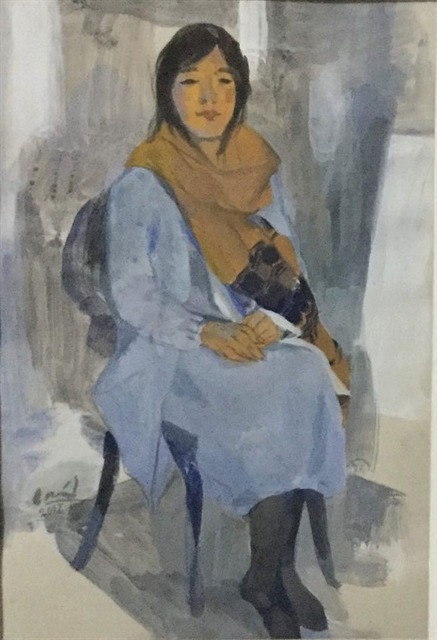
A painting by Trần Huy Oánh.
HÀ NỘI — Đa Diện (Polyhedra), an exhibition gathering emerging artists of Vietnamese contemporary art has just been kicked off in Hà Nội.
The exhibition stars Nguyễn Minh (Minh of Streets), Nguyễn Mạnh Hùng, Chu Viết Cường, Dương Tuấn, Nguyễn Huân, Nguyễn Công Hoài, Nguyễn Minh (Fat Minh), Doãn Hoàng Lâm, Tào Linh, Khổng Đỗ Duy, Bùi Hoàng Dương and Phạm Tuấn Phong.
F…
View On WordPress
0 notes
Photo
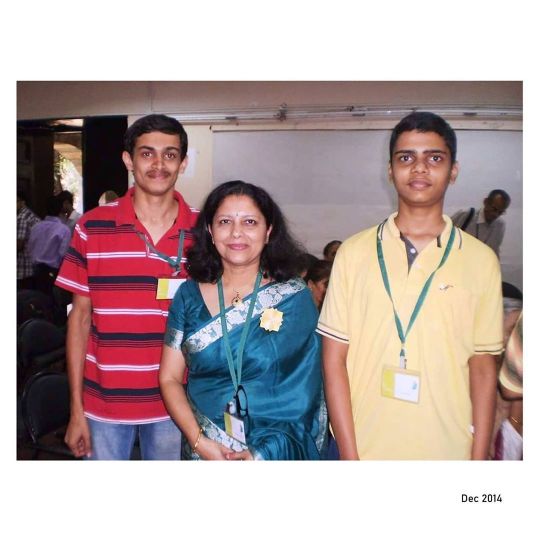
#Throwback 1 of 3: The privilege of Meeting Meenakshi Mukerji (@origamee)!! 😁 A memory I'll always cherish and be grateful for. Wonderfold is an annual Origami exhibition and workshop organised by @origami.mitra over 3-4 days. If you're an Origami enthusiast or even an art enthusiast, you should definitely plan to attend one the next time it's held. . . These are the pictures from Wonderfold 2014 - My first ever visit to the beautiful city of Mumbai 💙 It was absolute joy to meet the Origami enthusiasts from the Origami Mitra team (Mumbai and Pune). By the end of the event, I made some amazing friends, many of whom continue to stay in touch to discuss the artform and provide valuable inputs. Picture 1: with Meenakshi Mukerji & Charul Picture 2: with my father & Meenakshi Mukerji Picture 3: with members of Origami Mitra . . . #origami #origamee #modularorigami #origamimitra #meenakshimukerji #origamjmumbai #niksorigami #origamiindia #paperlicious #handmade #paperlicious #paperart #artofpaperfolding #origamilove #origamiartist #foldingpaper #papercraft #origamiheart #unitorigami #origamimathematics #origamimodular #origamimath #polyhedra #onesheetnocuts (at Sir J. J. College of Architecture) https://www.instagram.com/p/CB3J6f3lanP/?igshid=1tunh4am5pezd
#throwback#origami#origamee#modularorigami#origamimitra#meenakshimukerji#origamjmumbai#niksorigami#origamiindia#paperlicious#handmade#paperart#artofpaperfolding#origamilove#origamiartist#foldingpaper#papercraft#origamiheart#unitorigami#origamimathematics#origamimodular#origamimath#polyhedra#onesheetnocuts
0 notes
Photo
July 1969 - SNAKES / large color woodcut / the artist’s last work / by Netherlands-born museum exhibited and collected graphic artist, drawer, and printmaker who specialized in mathematically-inspired woodcuts, lithographs and mezzotints, MAURICE CORNELIS ESCHER (1898-1972)
Escher’s work features mathematical objects and operations including impossible objects, explorations of infinity, reflection, symmetry, perspective, truncated and stellated polyhedra, hyperbolic geometry, and tessellations

1K notes
·
View notes
Text
Building Mapping
Interconnection - Visionary projection mapping - WINNER of iMapp 2016 - 4K official video
youtube
Installation art collective Limelight has transformed the Parliament Building of Romania for the iMapp Bucharest International Video Mapping Competition. The projection required the use of 104 projectors to cast the 23,000 square meter surface of the Parliament’s front facade in over 1 million ANSI lumens.
iMapp 2016 International Video-Mapping Contest
iMapp Bucharest stands for video projections on the second largest administrative building in the world – the Palace of the Parliament a.k.a Casa Poporului; more than 104 projectors used, 23.000 square meters of projection surface, over 2.000.000 ANSI lumens and one huge stage. Each year in September, the best video artists showcase their work on the facade of Casa Poporului in front of a large audience.
The colossal Parliament building houses the Senate and the Chamber of Deputies, three museums and an international conference centre.(…) After the Romanian Revolution in 1989, the Palace of Parliament became widely known as the People’s House (Romanian: Casa Poporului). Due to its impressive endowments, conferences & events are organised by state institutions & international bodies, but even so about 70% of the building is empty and it is expensive as hell to keep it warm (the cost of heating & electric lighting alone exceeds $6 million per year?!) Unlike what is happening on the inside, the iMapp event gained a lot of respect. Rumours from Romania say that the People’s House has finally reached its higher purpose within existence: giving something back to the people, it serves as the biggest facade there is around to project on.
This year’s event centred on the theme of “Dialogue”. The six selected finalists for iMapp 2016 were Filip Roca (Montenegro); Romera Diseño e Infografia SL (Spain); VOID – Turkey; Mindscape Studio (Romania); Illuminarium3000 (Russia) and Limelight (Hungary). The event took place on Saturday, 24th of September, in Constituției Square. Before the video mapping shows, we could hear Golan Symphonic, a Romanian band with an innovative project, followed by the headliner of the evening, the famous Irish singer Róisín Murphy. Prior to the main event, the facade of the city’s Ion Mincu University of Architecture and Urbanism was also illuminated on two different evenings with video-mapping shows from Motionlab and Les Ateliers Nomad.
According to its creators, “the projection mapping shows the interconnectedness of all things from micro to macro as well as the outer and the inner universe. Conjuring emotions and feelings, the amazing display of colour, light and sound aims to reopen the dialogue between the internal and the external, through a cinematic journey from the state of separation to the state of eternal openness.”
As we can see, in the projection video, artists used lots of Optical illusion building elements, which reminds me of Maurits Cornelis Escher’s artworks.
Maurits Cornelis Escher (17 June 1898 – 27 March 1972) was a Dutch graphic artist who made mathematically-inspired woodcuts, lithographs, and mezzotints. Despite the wide popular interest, Escher was for long somewhat neglected in the art world, even in his native Netherlands. He was 70 before a retrospective exhibition was held. In the twenty-first century, he became more widely appreciated, with exhibitions across the world. His work features mathematical objects and operations including impossible objects, explorations of infinity, reflection, symmetry, perspective, truncated and stellated polyhedra, hyperbolic geometry, and tessellations. Although Escher believed he had no mathematical ability, he interacted with the mathematicians George Pólya, Roger Penrose, Harold Coxeter and crystallographer Friedrich Haag, and conducted his own research into tessellation. Early in his career, he drew inspiration from nature, making studies of insects, landscapes, and plants such as lichens, all of which he used as details in his artworks. He travelled in Italy and Spain, sketching buildings, townscapes, architecture and the tilings of the Alhambra and the Mezquita of Cordoba, and became steadily more interested in their mathematical structure. Escher's art became well known among scientists and mathematicians, and in popular culture, especially after it was featured by Martin Gardner in his April 1966 Mathematical Games column in Scientific American. Apart from being used in a variety of technical papers, his work has appeared on the covers of many books and albums. He was one of the major inspirations of Douglas Hofstadter's Pulitzer Prize-winning 1979 book Gödel, Escher, Bach.
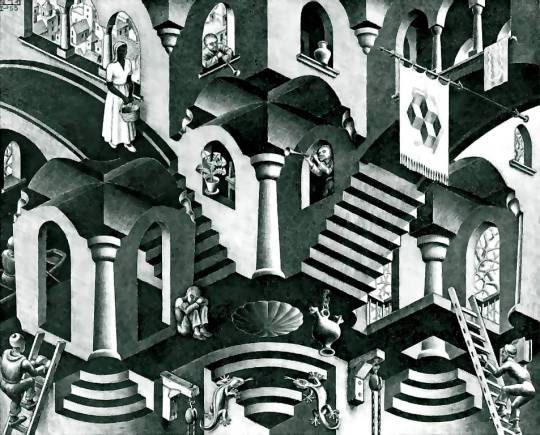
0 notes
Photo
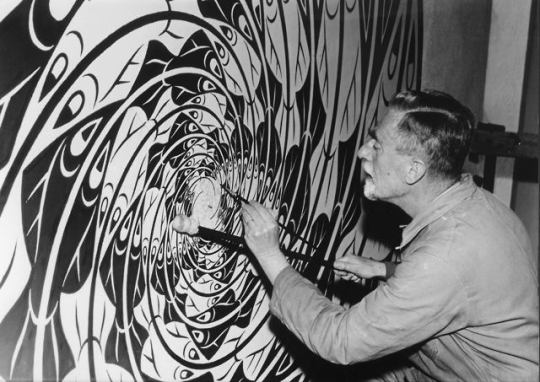
Arrivals & Departures - 17 June 1898 Celebrate Maurits Cornelis Escher Day!
Maurits Cornelis Escher (Dutch pronunciation: [ˈmʌurɪt͡s kɔrˈneːlɪs ˈɛʃər]; 17 June 1898 – 27 March 1972) was a Dutch graphic artist who made mathematically-inspired woodcuts, lithographs, and mezzotints. Despite wide popular interest, Escher was for long somewhat neglected in the art world, even in his native Netherlands. He was 70 before a retrospective exhibition was held. In the twenty-first century, he became more widely appreciated, with exhibitions across the world.
His work features mathematical objects and operations including impossible objects, explorations of infinity, reflection, symmetry, perspective, truncated and stellated polyhedra, hyperbolic geometry, and tessellations. Although Escher believed he had no mathematical ability, he interacted with the mathematicians George Pólya, Roger Penrose, Harold Coxeter and crystallographer Friedrich Haag, and conducted his own research into tessellation.
Early in his career, he drew inspiration from nature, making studies of insects, landscapes, and plants such as lichens, all of which he used as details in his artworks. He traveled in Italy and Spain, sketching buildings, townscapes, architecture and the tilings of the Alhambra and the Mezquita of Cordoba, and became steadily more interested in their mathematical structure.
Escher's art became well known among scientists and mathematicians, and in popular culture, especially after it was featured by Martin Gardner in his April 1966 Mathematical Games column in Scientific American. Apart from being used in a variety of technical papers, his work has appeared on the covers of many books and albums. He was one of the major inspirations of Douglas Hofstadter's Pulitzer Prize-winning 1979 book Gödel, Escher, Bach.
0 notes
Text
SCP im working on. commentrary (pos or neg) would be great
Item #: SCP-XXXX
Object Class: Euclid
Special Containment Procedures: SCP-XXXX is currently contained near Site 19. SCP-XXXX hives must be stored in close proximity to flowering vegetation, extending out approximately 500 meters in all directions for each hives . Beyond this range, there must be no flowering vegetation within 5 kilometers. The perimeter of SCP-XXXX containment are to be patrolled to prevent entrance to containment. The land for SCP-XXXX containment is to be owned by Foundation dummy companies claiming to sell honey isolated from external pollutants. Any instances of SCP-XXXX must be rendered unconscious before transportation to prevent containment breach.
Description: SCP-XXXX is a species of honeybee morphologically identical to the Western Honey Bee (//Apis mellifera//). However, instances of SCP-XXXX possess the ability to seemingly disappear from view, reappearing some distance away in considerably more time than required to cross the same distance without disappearing. During these disappearances, instances of SCP-XXXX are not affected by any physical barrier, regardless of thickness. It is theorized that these instances are capable of "passing through" objects by moving through a 4th spacial dimension, allowing them to circumvent obstacles by passing "over" them in the 4th dimension and reentering our space on the other side, and expending additional time due to crossing space in an additional dimension. Instances of SCP-XXXX appear to have no minimum or maximum to their time spent "disappeared", although determining the exact time elapsed is immensely challenging, as each instance is immensely similar to all others, marking bands fall off when the bee enters the 4th dimension, and isolating singular instances is made challenging by their ability to pass through barriers and communal nature. Rather than the typical hexagonal honeycomb structure created by non-anomalous bees, SCP-XXXX creates bitruncated cubic honeycombs, consisting of 14 sides, 6 squares and 8 hexagons. As these are closed polyhedra, the interior of the honeycombs are not accessible through non-anomalous means except through destroying the honeycomb. When isolated from vegetation, SCP-XXXX colonies are capable of surviving far longer than the honey apparently stored in visible honeycombs should allow, suggesting that they store honey in the 4th dimension as well as using it for transport. Despite this, no instance of SCP-XXXX has been observed with additional nectar after passing through the 4th dimensions, implying that the 3rd dimension is their only source of nectar. When outside the body, instances of SCP-XXXX pose the same amount of threat as a non-anomalous honey bee, but their ability to circumvent barriers can be extremely dangerous and Foundation personnel should exhibit immense care when interacting with SCP-XXXX. Should an instance of SCP-XXXX enter an open cavity within the human body, it will quickly become distressed and sting the interior surface of the organ that contains it. Even to personnel who are not allergic, the presence of a bee sting and dead bee within the body can be fatal.
0 notes
Text
‘Polyhedra’ by MID Studio
Polyhedra is a sound reactive and light sculpture. An Art piece that was created for the Barcelona Light Festival 2019 and commissioned by Barcelona City Council.
The piece has a regular polyhedron shape and float in the exhibition place. The piece was designed specifically for the Encants Market in Barcelona and it was installed under its 25 meter high mirrored deck. The luminous geometry floats in space and is created from two symmetric pyramids with a five-sided pentagonal base, creating a repetitive reflection effect on the multiple roof mirrors that surround it in all directions, enhancing its effect towards different viewing angles distorting its original shape. This effect is strengthened by using dynamic programming with LED technology, ambient lighting and sound that surrounds the installation, creating effects of great beauty. The sculpture has been designed and built by the artists using proprietary hardware and software technologies.
The piece is constructed from 15 segments of 5m long and 80mm thick polycarbonate tubes. These tubes have 300 RGBW addressable and individually controllable pixels. The joining of the vertices is made with custom-made metal parts, giving it rigidity and allowing the whole structure to work as a single solid and stable piece. To reinforce the entire structure, steel cables are arranged between the vertex and the center that allow to create tension and give the final adjustment to the piece. Finally, the control is carried out from the electronic modules in the vertex themselves.
Polyhedra was inspired by the vision of the artificial intelligence of the science fiction movies of the 80s (Ex: 2001, Tron). And how as a supposed superior intelligence could communicate with humans only through the universal language of light and sound, connecting technology and its own evolution.
The software created for this piece, a part in the controllers firmware and other part in MAXMSP, uses artificial intelligence mechanisms, algorithms and techniques to create patterns and behaviors that are translated into generative light and sound patterns in real time.
A project by Alex Posada & Xevi Bayona mid.studio
Idea and concept: Xevi Bayona, Alex Posada Technical development and integration: MID Studio Organization and production: Barcelona City Council
Architectural design: Xevi Bayona Lighting, music and sound design : Alex Posada Software engineering: Alex Posada Electronics and hardware engineering: M. A. de Heras, Alex Posada Construction and assembly: Ferroluar, Xevi Bayona
Filmmaking by: Mind The Film, Marcel Rodriguez
Acknowledgments: Maria Güell, Natalia Parody, Miguel Angel de Heras, Emi, David Tortajada and Volatil Rigging
0 notes
Text
The Golden Mean in da Vinci's Art
The Golden Mean in da Vinci’s Art

Leonardo da Vinci‘s illustrations of polyhedra in De divina proportione(On the Divine Proportion) and his views that some bodily proportions exhibit the golden ratio have led some scholars to speculate that he incorporated the golden ratio in his paintings.[37] But the suggestion that his Mona Lisa, for example, employs golden ratio proportions, is not supported by anything in Leonardo’s own…
View On WordPress
0 notes
Photo
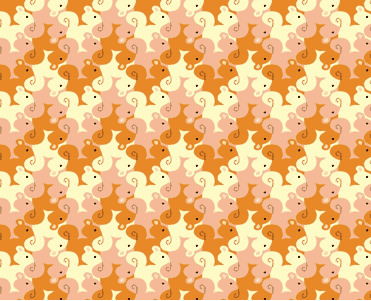
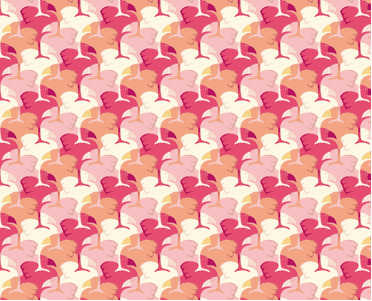

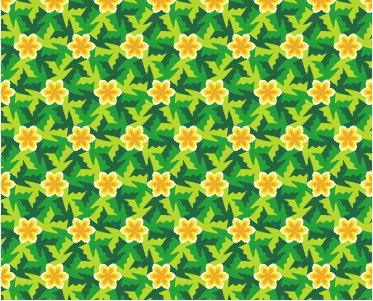
A tessellation is a collection of shapes called tiles that fit together without gaps or overlaps to cover the mathematical plane. M.C. Escher is known as the “Father” of modern tessellations. He inspired Japanese artist Makoto Nakamura to explore the potential of tessellation designs. His artwork involves repeating images of animals, flowers, and shapes to form that seamless pattern that fills the page and does not overlap. Makoto uses his tessellations in drawings, paintings, and other applications like layered three dimensional pieces. He majored in graphic design at Tama Art University in 1967. Later in 1998 he formed the Japan Tessellation Design Association. Recently he has focused on spherical puzzles. Some spherical works were designed by Escher and made of wood or ivory by Japanese craftsman, but are very solid. His challenge for his work is to make spherical tessellation elastic as puzzles for players to repeatedly assemble and disassemble by themselves. He believes that such puzzles could contribute to the understanding of the profound nature of polyhedra for non-specialists in geometry. I have included a few of his works that I found most interesting and stood out to me. I also included an example of his spherical tessellation. The squirrels are my favorite because I think squirrels are really cute and we do not have them in Hawaii. I also really liked the pink flamingos. Lastly, the green artwork I chose reminded me of a Hawaiian pattern it is a depiction of birds and flowers and I think it is really cool how he was able to combine two different designs and objects into one tessellation.
http://www.tessellation.info/en/info/artists/5/Makoto_Nakamura/
http://gallery.bridgesmathart.org/exhibitions/2015-bridges-conference/nakamura-makoto
0 notes